Programmes Living Pictures Living History
I am Asta Laszowska, the honourable Lady Claudius von Claudenburg, the second wife of Emilij the honourable Laszowski, first director of the City Museum in Zagreb...
.jpg) The event called Living Pictures at the Museum of Zagreb was held for the first time in 2000 during the weekend on the eve of Mardi Gras. It was at the same time the first challenge of introducing a museological interpretation and presentation by the living history method in Croatian museums. The idea was put forward by architect Željko Kovačić, the author of the design of the permanent exhibition of the Museum of Zagreb, with whom we had been intensively cooperating during the realisation of the museum set-up over a period of several years.
The event called Living Pictures at the Museum of Zagreb was held for the first time in 2000 during the weekend on the eve of Mardi Gras. It was at the same time the first challenge of introducing a museological interpretation and presentation by the living history method in Croatian museums. The idea was put forward by architect Željko Kovačić, the author of the design of the permanent exhibition of the Museum of Zagreb, with whom we had been intensively cooperating during the realisation of the museum set-up over a period of several years.
The first year, Living Pictures was held as a part of the programme of the big project called "Carnival in Zagreb" (Željko Kovačić was co-author), which endeavoured to renew the tradition of public merrymaking and the celebration of carnival in Zagreb. The aim of the project was to bring back life into the old centre of town with daily events on streets and squares, as well as to bring spirited visitors to the museum. In line with this kind of thinking, the museum identified the possibility of having a project of its own to encourage the public to visit the museum, thus removing the aura of exclusivity for many people who are not ready to take on the historical knowledge provided in the classic museum manner.
 The idea quickly led to the museological elaboration of the project. Željka Kolveshi and Nada Premerl have been the project leaders and the scenarios authors since 2000. The premise behind the treatment was the determination not to attempt to seek cheap popularity with the public by using jocular masks, but to bring to life, in a well-founded museological manner, an interpretation of city history with figures in costume that would at once entertainment the public but also set their curiosities working, while the city museum was supposed to become a place that would enable the visitors to have an easy and intelligible understanding of their relationship with their own city.
The idea quickly led to the museological elaboration of the project. Željka Kolveshi and Nada Premerl have been the project leaders and the scenarios authors since 2000. The premise behind the treatment was the determination not to attempt to seek cheap popularity with the public by using jocular masks, but to bring to life, in a well-founded museological manner, an interpretation of city history with figures in costume that would at once entertainment the public but also set their curiosities working, while the city museum was supposed to become a place that would enable the visitors to have an easy and intelligible understanding of their relationship with their own city.

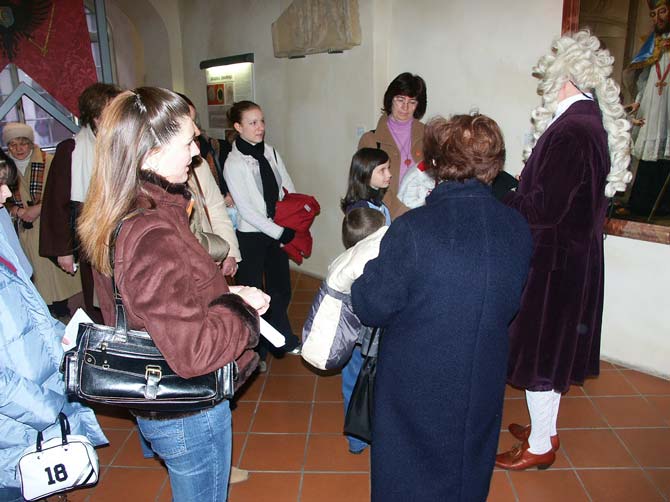
 The city can be described through various approaches. This primarily depends on the decision to define the mission statement for the museum. Zagreb City Museum created its new permanent exhibition (1998) based on the principle of a concept-orientated museum rather than as an object-orientated museum. This led the way to the aim of presenting it using a contextual approach, through presenting the meaning of the objects in such a way as to serve the experience of a museumscape of the identity of the city.
The city can be described through various approaches. This primarily depends on the decision to define the mission statement for the museum. Zagreb City Museum created its new permanent exhibition (1998) based on the principle of a concept-orientated museum rather than as an object-orientated museum. This led the way to the aim of presenting it using a contextual approach, through presenting the meaning of the objects in such a way as to serve the experience of a museumscape of the identity of the city.
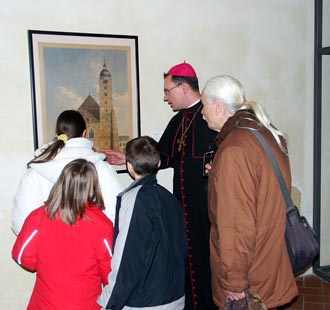 In contrast to previous exhibitions, the people-orientated approach was stressed, while objects as a part of the material cultural heritage were explored and catalogued as historical evidence, museum objects that hold a wealth of information. Having this in mind, the curators used the primary context of an object to define its new museum context, while avoiding, as a rule, any artificial reconstruction of its setting. But they also kept in mind the interpretation of the atmosphere of the time, the beautiful and the joyous, as well as the ugly and sad sides of life, social relationships, the adequate structure an number of inhabitants, the representation of various nationalities, as well as acculturation and assimilation, according to the power and significance of Zagreb through history to the present day.
In contrast to previous exhibitions, the people-orientated approach was stressed, while objects as a part of the material cultural heritage were explored and catalogued as historical evidence, museum objects that hold a wealth of information. Having this in mind, the curators used the primary context of an object to define its new museum context, while avoiding, as a rule, any artificial reconstruction of its setting. But they also kept in mind the interpretation of the atmosphere of the time, the beautiful and the joyous, as well as the ugly and sad sides of life, social relationships, the adequate structure an number of inhabitants, the representation of various nationalities, as well as acculturation and assimilation, according to the power and significance of Zagreb through history to the present day.
It is precisely this existing framework that evaluates social history that has proved appropriate in providing the possibility for describing the city in a human context via Living Pictures and the participants in a project of this kind.
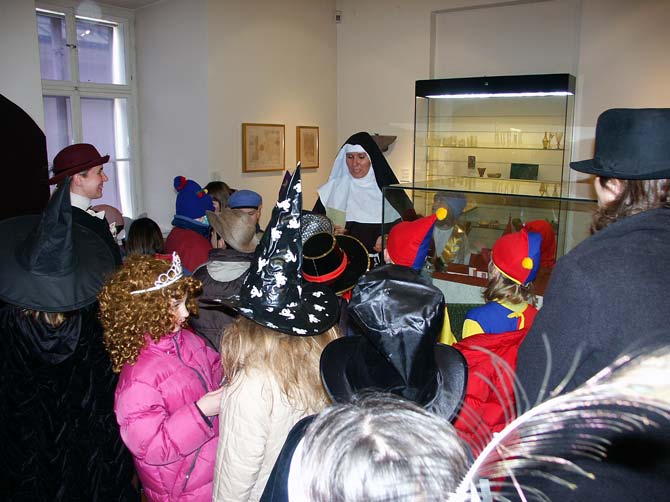

 Not only portraits of prominent figures from Zagreb, but other objects and themes that involve people, have proved to be an inexhaustible wealth of content for Living Pictures, a new form of communication with visitors, which has, through the introduction of living history in a manner of "first-person interpretation", made the Museum a place that has come to life, a place that is more open and speaks more loudly by allowing the visitor to pass through a gallery of quite distinct personalities, a gallery of authentic people.
Not only portraits of prominent figures from Zagreb, but other objects and themes that involve people, have proved to be an inexhaustible wealth of content for Living Pictures, a new form of communication with visitors, which has, through the introduction of living history in a manner of "first-person interpretation", made the Museum a place that has come to life, a place that is more open and speaks more loudly by allowing the visitor to pass through a gallery of quite distinct personalities, a gallery of authentic people.
In this way we hoped to make the visitors understand the museum presentation of the city for the benefit of the quality of their visit through different characters who were intermediaries between the past and the present.

 What makes the Living Pictures in the Zagreb City Museum particular is that the complete project of living history and the interpretative methodology was devised by the curators, project leaders, and effectuated by the whole staff of the museum. This is in contrast to similar projects elsewhere in the world for which, almost as a rule, actors are engaged, professional troupes registered for this kind of activity, naturally, with an appropriate fee. The advantage of our approach with respect to professional interpreters is in that every curator chooses the role of a historical personality that is closest to his or her field of expertise, and which subjectively feels right. This is proved by the conviction of his or her speech, temperament, and identification with the character – in other words by things that they don't need to learn. They have complex professional knowledge, they are exceptionally educated through the content and periods they study, and they can easily accept any improvisation that might occur as a result of talking with visitors. The spectrum of concrete contents and information that can be used depending on the situation will always have a more positive effect when coming from well-trained person. Naturally, they are expected to have a talent for acting and to be, above all, communicative. Even if they are not perfect actors, the visitors will tolerate this with sympathy, since the first-person method of interpretation also holds an element of entertainment.
What makes the Living Pictures in the Zagreb City Museum particular is that the complete project of living history and the interpretative methodology was devised by the curators, project leaders, and effectuated by the whole staff of the museum. This is in contrast to similar projects elsewhere in the world for which, almost as a rule, actors are engaged, professional troupes registered for this kind of activity, naturally, with an appropriate fee. The advantage of our approach with respect to professional interpreters is in that every curator chooses the role of a historical personality that is closest to his or her field of expertise, and which subjectively feels right. This is proved by the conviction of his or her speech, temperament, and identification with the character – in other words by things that they don't need to learn. They have complex professional knowledge, they are exceptionally educated through the content and periods they study, and they can easily accept any improvisation that might occur as a result of talking with visitors. The spectrum of concrete contents and information that can be used depending on the situation will always have a more positive effect when coming from well-trained person. Naturally, they are expected to have a talent for acting and to be, above all, communicative. Even if they are not perfect actors, the visitors will tolerate this with sympathy, since the first-person method of interpretation also holds an element of entertainment.

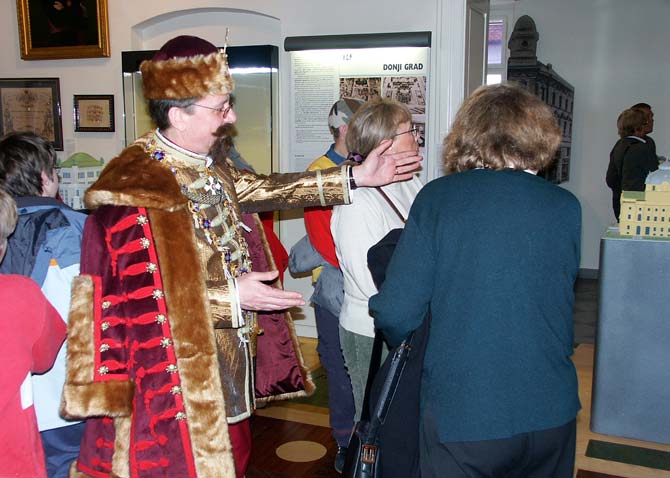
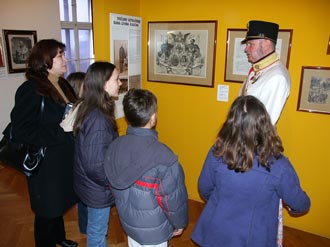 Apart from members of the curatorial staff who are responsible for the scenario, the Living Pictures project involves all other members of the museum staff. This is not surprising since even they need to have knowledge about the museum they work in, even though they work there in a different capacity. The librarian, the educator, the head of museum PR, the photographer, the restorer, technical staff, and even the secretary and others receive instructions and training for their Living Picture in association with curators. This also includes associates, our children, who know the Museum very well, and retired staff members, since the population of the city does not exclude either children or senior citizens. The director of the museum, in line with his position, takes the role of host, whether he is Adolf Hon. Mošinski, one of the historical mayors of Zagreb, or Emilij Hon. Laszowski, founder of Zagreb City Museum.
Apart from members of the curatorial staff who are responsible for the scenario, the Living Pictures project involves all other members of the museum staff. This is not surprising since even they need to have knowledge about the museum they work in, even though they work there in a different capacity. The librarian, the educator, the head of museum PR, the photographer, the restorer, technical staff, and even the secretary and others receive instructions and training for their Living Picture in association with curators. This also includes associates, our children, who know the Museum very well, and retired staff members, since the population of the city does not exclude either children or senior citizens. The director of the museum, in line with his position, takes the role of host, whether he is Adolf Hon. Mošinski, one of the historical mayors of Zagreb, or Emilij Hon. Laszowski, founder of Zagreb City Museum.
 Although it is a time for masks, we stress that we do not wear masks but costumes. And, let me be clear, we do not use items from the Museum holdings. Rather, through our presence we give meaning to the objects that surround us at the exhibition. We borrow period costumes and props from theatres, as well as film and television wardrobe departments. However, in order for the interpretation to be compelling and evidently based on historical evidence, we use details like copies of various documents, advertisements and leaflets for theatre and film shows that we distribute to interested visitors.
Although it is a time for masks, we stress that we do not wear masks but costumes. And, let me be clear, we do not use items from the Museum holdings. Rather, through our presence we give meaning to the objects that surround us at the exhibition. We borrow period costumes and props from theatres, as well as film and television wardrobe departments. However, in order for the interpretation to be compelling and evidently based on historical evidence, we use details like copies of various documents, advertisements and leaflets for theatre and film shows that we distribute to interested visitors.

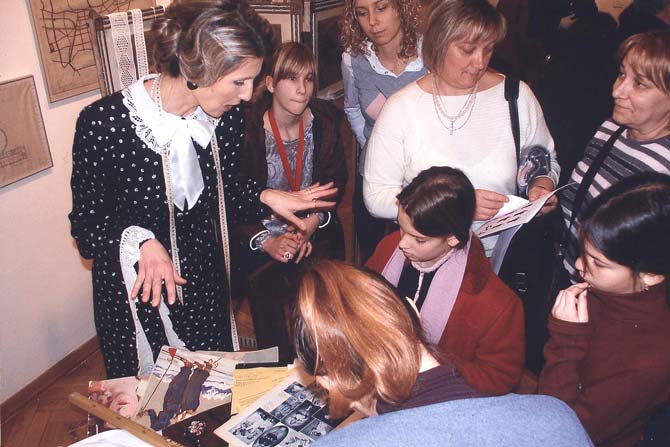
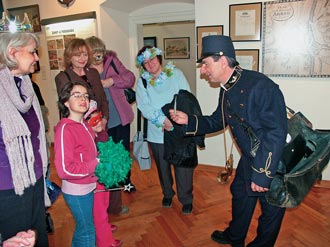 The results of the project have every year justified the intentions. We succeeded in bringing the lives of people from the past closer to today's visitors, as well as in creating a context for original pieces at the exhibition that played a special part in people's behaviour. Communication was established with all categories of visitors: they were ready to talk, to ask questions and, finally, some of them even became engrossed in the period. They asked us to hold the event regularly, every week, or at least every month, but this was simply not feasible in this way, so we decided to hold it once a year for Mardi Gras.
The results of the project have every year justified the intentions. We succeeded in bringing the lives of people from the past closer to today's visitors, as well as in creating a context for original pieces at the exhibition that played a special part in people's behaviour. Communication was established with all categories of visitors: they were ready to talk, to ask questions and, finally, some of them even became engrossed in the period. They asked us to hold the event regularly, every week, or at least every month, but this was simply not feasible in this way, so we decided to hold it once a year for Mardi Gras.
We have been holding the event Living Pictures ever since 2000, always evoking a big response from the visitors, of whom there are more than 3,000 during a weekend.
Željka Kolveshi
photo Miljenko Gregl
Related publications
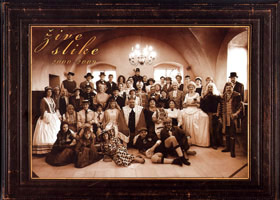 Kolveshi, Željka. Living Pictures 2000-2009.
Kolveshi, Željka. Living Pictures 2000-2009.
Zagreb : Zagreb City Museum, 2009
Related papers
Kolveshi, Željka. Living Pictures : Mardi Gras at the Museum of Zagreb. // Managing Change : the museum facing economic and social challenges : Papers of the ICMAH General Meeting (Barcelona, 2nd - 4th July 2001). Barcelona : ICMAH ; Institut de cultura : Museu d'historia de la ciutat, 2001, pp. 129-132.

